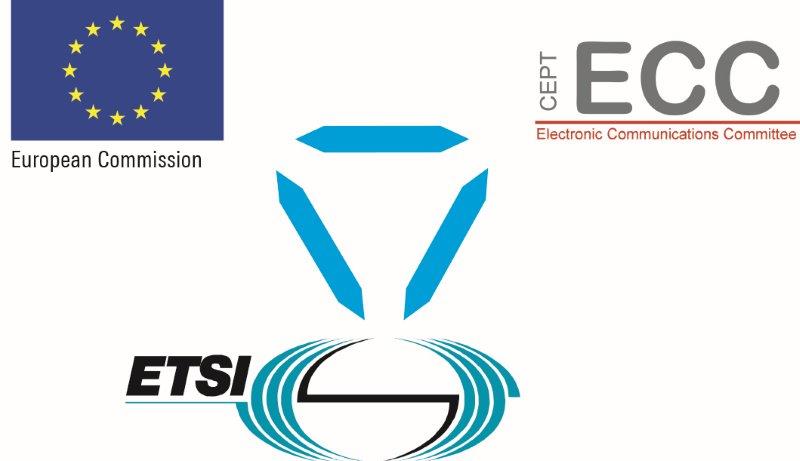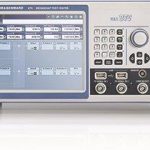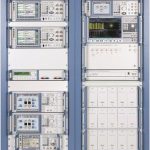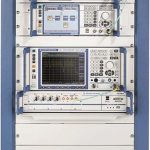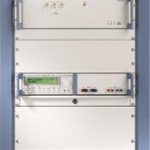The new radio equipment directive (RED) is effective from mid-June onward. The directive also covers radio receivers; they will have to meet minimum performance requirements in terms of sensitivity and selectivity.
Radio transmissions only with permission
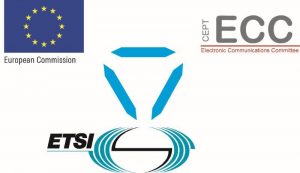
Fig. 1: Regulatory bodies governing radio operation in Europe.
Whoever wants to transmit or receive radio signals in Europe must comply with the relevant European directives governing the approval of radio equipment. These directives are developed in close cooperation between the European Commission as a body taking an active part in political decision-making, the European Electronic Communications Committee (ECC) within the European Conference of Postal and Telecommunications Administrations (CEPT), both of them guardians of the ever more valuable frequency resources, as well as the European Telecommunications Standards Institute (ETSI, Fig. 1). In addition to general requirements relating, for example, to the protection of health and safety or environmental compatibility, the directives also contain fundamental technical requirements. All radio equipment must fulfill what is referred to as “essential requirements” in the applicable directives, during normal operation and under the operating conditions specified by the manufacturer (ambient temperature, humidity, etc.). Evidence of compliance must be furnished by the radio equipment manufacturer or operator as a prerequisite for obtaining approval for operating the equipment and putting it on the market. To this end, the manufacturer or operator must submit a test report that has been issued by a certified test laboratory using validated measuring equipment, for example from Rohde & Schwarz. Technical details on the diverse radio applications and frequency bands falling under the directives are specified in the “harmonized standards” developed by ETSI, along with possible test methods to demonstrate compliance. Harmonized standards become effective as European standards (EN) following a thorough examination by the regulatory bodies. Fig. 2 presents important examples of these standards. The currently applicable European standards are listed in the Official Journal of the European Union. An overview can be found on the ETSI website (www.etsi.org).
- Fig. 2: Important examples of radio standards defining the technical details for compliance with the RED.
- Fig. 2: Important examples of radio standards defining the technical details for compliance with the RED.
- Fig. 2: Important examples of radio standards defining the technical details for compliance with the RED.
- Fig. 2: Important examples of radio standards defining the technical details for compliance with the RED.
The new directive also covers receivers
According to the Official Journal of the European Union L 153/62 of May 22, 2014, the previous directive RTTED 1999/5/EC, better known as R&TTE, has been replaced by the new radio equipment directive RED 2014/53/EU published on April 16, 2014. Replacement took effect on June 13, 2016, with an additional transition period of one year, subject to approval by the national legislative and regulatory bodies.
Technical aspects are essentially covered by Article 3.2, both in the previous and the new directive. In the previous directive, this article stipulated that a radio should only use the allowed frequency bands while avoiding interference with other bands. To fulfill these requirements, the transmitter section of a radio had to meet specified technical standards. Radio receiver sections and mere radio receivers (RX-only products) had always been exempt from the regulation.
The new RED adds an inconspicuous but crucial requirement to Article 3.2. Radios must make efficient use of the available spectrum. This is a consequence of the growing economic importance of radio resources. The directive now explicitly covers the receiver sections of radio equipment as well as mere radio receivers, and requires that they achieve a minimum level of performance in terms of sensitivity and selectivity, which must be demonstrated by appropriate measurements.
ETSI Recommendation EG 201 399 lists the typical radio transmitter and receiver parameters to be tested. Fig. 3 shows a selection of these parameters.
Summary
The new European radio equipment directive raises the demands on radio equipment of all types, calling for higher spectral efficiency. This means that from mid-2016, radio receivers will also have to meet regulatory minimum performance requirements, and consequently will have to be tested. Rohde & Schwarz offers all the necessary T&M equipment, both as lab instruments and as fully automatic, complete turnkey solutions tailored to provide the tests for a given regulatory scenario.
| European standard | Equipment and frequency ranges covered by the standard | Test solution |
| EN 302 571 | Intelligent transport systems (ITS), e.g. modules for car-to-car communications 5855 MHz to 5925 MHz |
R&S®TS-ITS100 RF conformance test system |
| EN 300 328 | Wideband transmission systems, e.g. WLAN modules 2400 MHz to 2483.5 MHz (ISM band) |
R&S®TS8997 regulatory test system for wireless devices |
| EN 301 893 | 5 GHz high performance RLAN, e.g. WLAN modules 5.15 GHz to 5.35 GHz and 5.47 GHz to 5.725 GHz |
R&S®TS8997 regulatory test system for wireless devices |
| EN 301 908-13 | IMT cellular networks, e.g. LTE user equipment E-UTRA frequency bands 1, 3, 7, 8, 20, 33, 34, 38, 40, 42, 43 |
R&S®TS8980 RF test system family |
| EN 303 340 | Digital terrestrial TV broadcast receivers; harmonized standard covering the essential requirements of article 3.2 of Directive 2014/53/EU | R&S®BTC broadcast test center |
Transmitters
(in line with previous (R&TTE) and new (RED) directive)Frequency accuracy and stability
Transmit power
Adjacent-channel power
Spurious emissions
Intermodulation attenuation
Transient behavior
Modulation accuracy
Duty cycle
Receivers
(in line with new directive (RED))Dynamic range and sensitivity
Co-channel rejection
Adjacent-channel selectivity
Spurious response rejection
Intermodulation response rejection
Blocking / desensitization
Spurious emissions
Multipath sensitivity
Fig. 3: Essential requirements on radio transmitters and receivers in accordance with ETSI EG 201 399, and the associated parameters.


